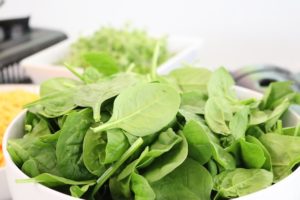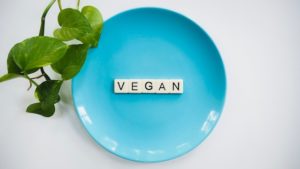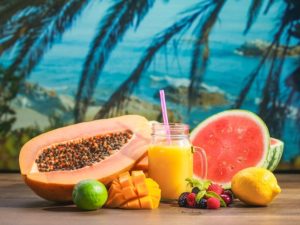Are you skipping your routine walk or missing office due to back pain?
Research shows that lower back pain is a major reason for frequent clinic visits.[1]
But are you aware that in many cases, research shows that you may manage your low back pain with the right food choices?
 In a happening city like London and a super busy lifestyle, back pain is common.
In a happening city like London and a super busy lifestyle, back pain is common.
Almost 4.7% population in the UK is suffering from lower back pain.
So, research tells us that we need to look at nutrition and diet changes to manage the pain. [2]
Surprised?
Yes!
There is a diet for lower back pain that will help you to forget your pain.
But first, you need to understand why you suffer from lower back pain.
By the way,
If you would like to learn why my clients describe this unique back rehab transformation methodology as the most successful, predictable and comprehensive back transformation programme in the UK here are just a few case studies like Hayley, Franco, Elizabeth Tiffany, Jan, Michaela, W.T. Police officer, Emma, Huw or Dr Christian NHS.
Causes Of Back Pain
Lower back pain may originate due to weak core and back muscles, habits, repetitive movements, events – trauma or wrong postures.
Some medical conditions such as arthritis, lumbar herniated disc, trauma or injury to your back, and sciatic nerve involvement can dramatically increase your chronic back pain.[3]
It may simply be of an unknown origin.
Yes, sometimes it happens.
It becomes difficult to know why you get pain in your back.
But whatever may be the basic cause of pain, a mild inflammation will be there, giving you pain, and a laser-sharp customised diet can help you reduce your body inflammation dramatically.
Now you got it right!
Adhering to a customised diet for lower back pain will help you manage your back pain.
What is an anti-inflammatory diet?
A French lawyer once wrote,
“You are what you eat”……
– Anthelme Brillat-Savarin –
This means if you want to be fit and healthy, you should consume good nutritious food.
Selected anti-inflammatory food may reduce inflammation that causes pain.
However, a pro-inflammatory diet may increase pain because these dietary constituents stimulate our body’s cells to release some biochemicals that are responsible for causing inflammation in your body.
I would like to recommend a customised diet for lower back pain planned just for you that helps fight the pain that is keeping you off your routine.
Want to know more about anti-inflammatory food?
BOOK YOUR FREE CONSULTATION NOW!The Pain Mediators:
Medically, certain chemicals in your body are responsible for the development and progress of back pain.
Researchers refer to these as pain or inflammatory mediators.[4]
Cytokines and interleukins are just a few names of these pain mediators.
These pain mediators participate in the chemical pathways in your body giving you pain.
Left untreated, they will go on a major destruction spree giving you more intense pain.
But, nothing to worry about.
You can keep them under control 😊
It’s all possible due to the massive advanced research in nutrition science.
Anti-Inflammatory Diet: Your Pain Warrior
Targeting these mediators is the main job of the pain warrior.
To successfully fight the pain mediators, I will recommend dietary and nutrition changes in your daily food. [5]
Research suggests that an anti-inflammatory diet comprises certain fruits, vegetables, fibre-rich foods, long-chain and monounsaturated fats, and antioxidants.
Your choice has to be colourful, leafy, fresh, and gently slow cooked home-cooked food.[6]
Are you ready for a positive dietary transformation to fight low back pain?
Click here for customised dietary recommendations.
Just read how expertise in nutrition and food helped Hayley to fight pain,
Hayley quotes: “When you have an injury, there’s no margin for error. You have to choose people who really know what they are doing. Jazz has helped me and many others recover successfully from their injuries. His knowledge about anatomy, physiology, nutrition, and how to exercise safely – SAFELY being the key word, I believe, is unparalleled. I recommend him highly”!
– Hayley –
Foods That May Help Reduce Inflammation And Lower Back Pain
It’s not just about what we must eat, it is also about what we must not eat!
As you can see at this study researchers have claimed that certain food products may enhance inflammatory mediators. [7]
Such pro-inflammatory foods are precursors of inflammation that may result in lower back pain.
I am sure you will agree with the following recommendations to reduce inflammation and pain:
- The Sunshine Magic !
 Embrace the magic of sunshine vitamin D and calcium as both are vital for healthy bones.
Embrace the magic of sunshine vitamin D and calcium as both are vital for healthy bones.
To absorb dietary calcium, we need vitamin D.
Research shows that vitamin D participates in inflammatory pathways and pain thus reducing its occurrence.
Research indicates that a deficiency of dietary calcium and vitamin D is a significant reason for chronic lower back pain.[8,9]
Include the following in your diet to get more calcium and vitamin D:[10]
- Green leafy veggies such as kale and spinach, mustard greens, and lettuce.
- Root vegetables such as sweet potatoes and rhubarb.
- Red and white beans, lentils, chickpeas, cowpeas, and green gram.
- Parboiled rice.
- Broccoli.
- Wheat and wheat-based products such as bread or calcium-fortified wheat.
I will recommend the daily inclusion of soy milk, orange juice or orange fruit, and occasionally, dark chocolate to meet the dietary needs of vitamin D. [11]
Also feel free to use plant-based oils such as wheat germ oil, oil from soya, linseed, and pumpkin seed for cooking.[12]
- Fight Your Pain The Vegetarian and Plant Based Style:
I will carefully and successfully design for you a very effective customised diet plan for you to manage your lower back pain better.
However, speaking generally we may consider some anti-inflammatory vegetables and fruits which reduce the inflammatory markers and the pain associated with them:[13]
 Papaya, mango, and pineapple are rich in anti-inflammatory enzymes.
Papaya, mango, and pineapple are rich in anti-inflammatory enzymes.- Ginger, turmeric, and green tea are loaded with such chemicals that help fight pain and inflammation.
- Vegetables like green beans, lettuce, broccoli, zucchini, and arugula are a must in your daily food plate.
- Condiments such as black pepper have a good anti-inflammatory effect.
- Garlic, onion, carrot, and pumpkin are equally important.
Want to know more about the benefits of customised nutrition for back pain?
Contact London’s number 1 sports nutritionists.
BOOK YOUR FREE CONSULTATION NOW!- Go Vegan, I Mean – Healthy Vegan:
 Going vegan will reduce inflammation and pain however, this won’t happen when you eat McDonald vegan burgers, fried foods or vegan donuts.
Going vegan will reduce inflammation and pain however, this won’t happen when you eat McDonald vegan burgers, fried foods or vegan donuts.
The right types of protein-based diets have been shown to reduce the intensity of lower back pain.[5]
If you aren’t allergic to any of these – I could recommend some of the following vegan options in your daily diet: [13]
- Get your omega-3 fatty acid from seeds such as flax, chia, sunflower, hemp, and pumpkin.[14]
- Olive oil effectively reduces muscular pain. [5]
- Seaweed, spirulina, nori and chlorella are rich in omega-3 fats and are the best options for vegans.[15]
- Nuts like almonds and walnuts are rich sources of omega-3 fatty acids.
- Plant-based milk from almonds, cashew nuts, and coconut can be a good vegan alternative to normal pro inflammatory dairy products.[13]
Positive feedbacks from clients encourage me to create customised nutrition recommendations.
One of my clients Franco quotes:
“I am stronger, faster, and better. I’ve had no flare-ups since training with Jazz. I now know there is a safe and healthy way towards a flexible and strong body and back pain-free if you suffered from a back injury. I have no more dullness or low levels of constant pain in my back. I can move freely without thinking about movement.”
– Franco –
A free of allergens, healthy balanced and anti-inflammatory diet is best for all of you seeking a long-term solution for back pain.
Just as my client, Jan says…
“ I built strength and endurance through training and doing way more than I thought possible. I could potentially take up a new sport for example. The pain diminished to a final reduction of 85-90 percent. His commitment, knowledge, and care are surely unsurpassable. I would recommend Jazz without reservation.”
– Jan –
Hayley, Franco, Jan, and are just a few of my clients who successfully achieved their back pain transformation goals.
Do you too want to get similar benefits?
BOOK YOUR FREE CONSULTATION NOW!Remember research shows that diet and lower back pain go hand in hand.
Make the recommended changes in your diet suggested by an expert sports nutritionist, elite rehab trainer and experience being pain-free.
Foods to Avoid if You Have Lower Back Pain
As I recommend a customised diet for you considering your intensity and nature of lower back pain, I will also suggest the type of food you should avoid.
Processed food, fast food, and restaurant food contain such ingredients that trigger inflammatory pathways.
Research shows that as a result, the pain mediators become active and you may suffer from intense pain just because you have been making wrong food choices. [16]
As diet and low back pain are related avoid eating these foods:
- Processed food: Cookies, pastries, cakes, meat, chips and other ultra-processed food is the most easily available food option at the supermarket.
Are you aware of what level of inflammatory potential it carries?[17]
We are well versed in the fact that inflammation is the target key to causing pain.
Stay away from processed food and you will have much lesser back pain.
- Fast food and restaurant food: There are hidden dangers in eating fast food or restaurant-cooked food.[18]
Many restaurants cook food in animal fat, or reused oil, or add preservatives, ferment it and take away the nutrition.
Research shows that such food will trigger inflammation, increase obesity and risk of other diseases and eventually add to your back pain.
Want to know more about the customised food programme to help you reduce spine degeneration and avoid lower back pain?
You need a Low Back Pain Rehab by London’s Best Back Trainer.
So, why don’t you connect with Jazz?
BOOK YOUR FREE CONSULTATION NOW!Jazz Alessi: Low Back Pain Rehab by London’s Best Back Trainer
 Jazz is London’s number 1 sports nutritionist, and injury rehabilitation personal trainer in London specialised in creating successful back pain transformations.
Jazz is London’s number 1 sports nutritionist, and injury rehabilitation personal trainer in London specialised in creating successful back pain transformations.
With such a high prevalence of lower back pain in a busy city like London, what you need most is an elite rehab London personal trainer who will guide you and customise the diet and exercise plan made specifically for you.
Remember, one diet does not fit all!
Your reason for back pain may be different than others.
So, you require a tailored diet plan designed for your body, challenges and goals.
Diet for lower back pain is easy to follow.
Jazz will help you to find out the exact reason causing your back pain so that through customised diet, nutrition and exercise he can put you through a successful back pain transformation programme.
BOOK YOUR FREE CONSULTATION NOW!Next time you have that disturbing back pain, don’t try home remedies or pop-up anti-inflammatory pills, just call to book your appointment with Jazz Alessi.
Who is Jazz Alessi?
- Being a No.1 sports nutritionist in London, and a renowned sports injury rehabilitation specialist – long term specialised in back pain, Jazz Alessi has a wide span of clientele in London.
- With the expertise he has, Jazz can transform your nasty lower back pain that lasts for months or years just by tailoring a diet for lower back pain.
- With his in-depth knowledge and experience, Jazz will carefully design a laser sharp customised plan with which food to eat and which to avoid specifically if you have lower back pain.
- With comprehensive knowledge in managing painful health conditions and rehabilitation, Jazz is just a call away for you.
- Don’t suffer from that back pain, just call or click here and together we can fight the pain off.
What are you waiting for?
BOOK YOUR FREE CONSULTATION NOW!
References
1. DePalma, M.G. Red flags of low back pain. JAAPA : official journal of the American Academy of Physician Assistants 2020, 33, 8-11, doi:10.1097/01.JAA.0000684112.91641.4c. https://pubmed.ncbi.nlm.nih.gov/32740106/
2. Edwards, J.; Hayden, J.; Asbridge, M.; Gregoire, B.; Magee, K. Prevalence of low back pain in emergency settings: a systematic review and meta-analysis. BMC musculoskeletal disorders 2017, 18, 143, doi:10.1186/s12891-017-1511-7. https://pubmed.ncbi.nlm.nih.gov/28376873/
3. Knezevic, N.N.; Candido, K.D.; Vlaeyen, J.W.S.; Van Zundert, J.; Cohen, S.P. Low back pain. Lancet (London, England) 2021, 398, 78-92, doi:10.1016/s0140-6736(21)00733-9. https://pubmed.ncbi.nlm.nih.gov/34115979/
4. Lipnik-Stangelj, M. Mediators of inflammation as targets for chronic pain treatment. Mediators of inflammation 2013, 2013, 783235, doi:10.1155/2013/783235. https://www.ncbi.nlm.nih.gov/pmc/articles/PMC3848385/
5. Pasdar, Y.; Hamzeh, B.; Karimi, S.; Moradi, S.; Cheshmeh, S.; Shamsi, M.B.; Najafi, F. Major dietary patterns in relation to chronic low back pain; a cross-sectional study from RaNCD cohort. Nutrition Journal 2022, 21, 28, doi:10.1186/s12937-022-00780-2. https://pubmed.ncbi.nlm.nih.gov/35546233/
6. Brain, K.; Burrows, T.L.; Bruggink, L.; Malfliet, A.; Hayes, C.; Hodson, F.J.; Collins, C.E. Diet and Chronic Non-Cancer Pain: The State of the Art and Future Directions. Journal of clinical medicine 2021, 10, doi:10.3390/jcm10215203. https://www.ncbi.nlm.nih.gov/pmc/articles/PMC8584994/
7. Hébert, J.R.; Shivappa, N.; Wirth, M.D.; Hussey, J.R.; Hurley, T.G. Perspective: The Dietary Inflammatory Index (DII)-Lessons Learned, Improvements Made, and Future Directions. Advances in nutrition (Bethesda, Md.) 2019, 10, 185-195, doi:10.1093/advances/nmy071. https://pubmed.ncbi.nlm.nih.gov/30615051/
8. Carballo-Casla, A.; de Paz-Cantos, S.; Ortolá, R.; García-Esquinas, E.; Sotos-Prieto, M.; Banegas, J.R.; Rodríguez-Artalejo, F. Dietary Vitamin D Intake, Pain Incidence, and Pain Changes in Older Adults: The Seniors-ENRICA-1 Cohort. Nutrients 2022, 14, doi:10.3390/nu14183776. https://pubmed.ncbi.nlm.nih.gov/36145150/
9. Alshahrani, F.M.; Alghamdi, A.; Alateeq, A.; Bukhari, M.; Alsadun, A.; Almaghrabi, I.; Almalki, M.H. Assessment of calcium intake and perception of calcium-rich food among healthcare students at King Saud bin Abdulaziz University for Health Science (KSAU-HS). Archives of osteoporosis 2020, 15, 168, doi:10.1007/s11657-020-00839-9. https://pubmed.ncbi.nlm.nih.gov/33083846/
10. Bourassa, M.W.; Abrams, S.A.; Belizán, J.M.; Boy, E.; Cormick, G.; Quijano, C.D.; Gibson, S.; Gomes, F.; Hofmeyr, G.J.; Humphrey, J.; et al. Interventions to improve calcium intake through foods in populations with low intake. Annals of the New York Academy of Sciences 2022, 1511, 40-58, doi:10.1111/nyas.14743. https://nyaspubs.onlinelibrary.wiley.com/doi/10.1111/nyas.14743
11. Benedik, E. Sources of vitamin D for humans. International journal for vitamin and nutrition research. Internationale Zeitschrift fur Vitamin- und Ernahrungsforschung. Journal international de vitaminologie et de nutrition 2022, 92, 118-125, doi:10.1024/0300-9831/a000733. https://pubmed.ncbi.nlm.nih.gov/34658250/
12. Baur, A.C.; Brandsch, C.; König, B.; Hirche, F.; Stangl, G.I. Plant Oils as Potential Sources of Vitamin D. Frontiers in nutrition 2016, 3, 29, doi:10.3389/fnut.2016.00029. https://www.frontiersin.org/articles/10.3389/fnut.2016.00029/full
13. Bustamante, M.F.; Agustín-Perez, M.; Cedola, F.; Coras, R.; Narasimhan, R.; Golshan, S.; Guma, M. Design of an anti-inflammatory diet (ITIS diet) for patients with rheumatoid arthritis. Contemporary clinical trials communications 2020, 17, 100524, doi:10.1016/j.conctc.2020.100524. https://pubmed.ncbi.nlm.nih.gov/32025586/
14. Cholewski, M.; Tomczykowa, M.; Tomczyk, M. A Comprehensive Review of Chemistry, Sources and Bioavailability of Omega-3 Fatty Acids. Nutrients 2018, 10, doi:10.3390/nu10111662. https://pubmed.ncbi.nlm.nih.gov/30400360/
15. Matos, Â.P.; Novelli, E.; Tribuzi, G. Use of algae as food ingredient: sensory acceptance and commercial products. Frontiers in Food Science and Technology 2022, 2, doi:10.3389/frfst.2022.989801. https://www.frontiersin.org/articles/10.3389/frfst.2022.989801/full
16. Rondanelli, M.; Faliva, M.A.; Miccono, A.; Naso, M.; Nichetti, M.; Riva, A.; Guerriero, F.; De Gregori, M.; Peroni, G.; Perna, S. Food pyramid for subjects with chronic pain: foods and dietary constituents as anti-inflammatory and antioxidant agents. Nutrition research reviews 2018, 31, 131-151, doi:10.1017/s0954422417000270. https://pubmed.ncbi.nlm.nih.gov/29679994/
17. Silva, C.A.; Santos, I.D.S.; Shivappa, N.; Hebert, J.R.; Crivellenti, L.C.; Sartorelli, D.S. The role of food processing in the inflammatory potential of diet during pregnancy. Revista de saude publica 2019, 53, 113, doi:10.11606/s1518-8787.2019053001154. https://www.ncbi.nlm.nih.gov/pmc/articles/PMC6919278/
18. Fuhrman, J. The Hidden Dangers of Fast and Processed Food. American journal of lifestyle medicine 2018, 12, 375-381, doi:10.1177/1559827618766483. https://www.ncbi.nlm.nih.gov/pmc/articles/PMC6146358/




 Papaya, mango, and pineapple are rich in anti-inflammatory enzymes.
Papaya, mango, and pineapple are rich in anti-inflammatory enzymes.